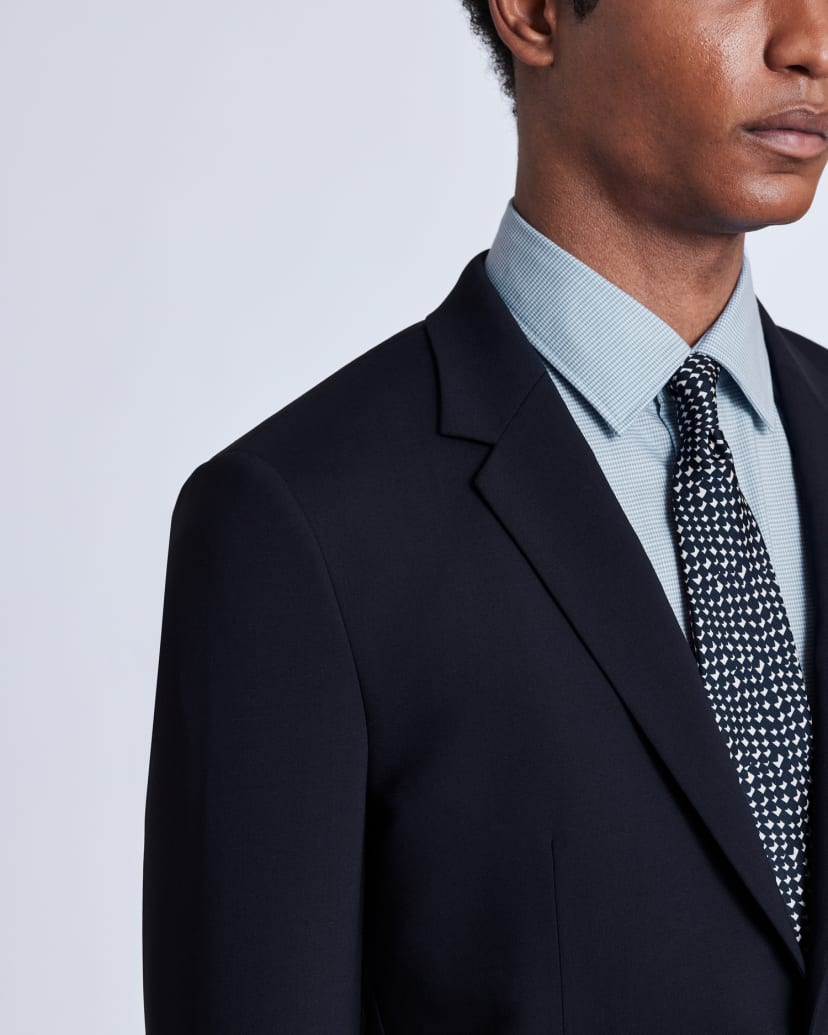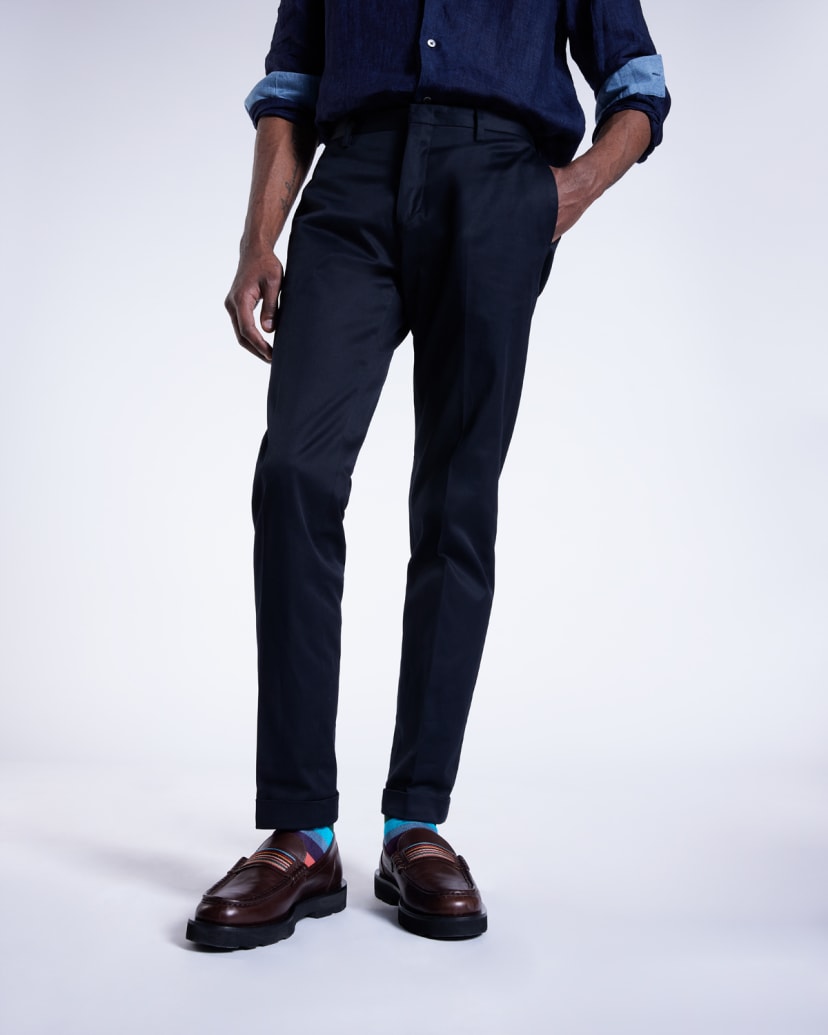How To Speak Suit: A Guide To Lapels

Learn more about the different styles – notch lapels, peak lapels and shawl lapels – and how to spot them in our tailoring guide.
Lapels are one of the things that can make or break a men’s designer suits or blazer. But knowing where to start – and what lapel is which – can make picking the right men’s lapel a struggle. We’ve made it a little easier with our guide to every type of lapel you’ll find on a suit jacket or men’s blazer. Read on to find out more about notch lapels, peak lapels, and shawl lapels – as well as how to identify them.
What is a lapel?
Jacket lapels are such an integral part of menswear – in fact without lapels, the men’s suit jacket or men’s blazer wouldn’t exist – that it seems odd to think of a time when they didn’t exist. But lapels didn’t actually start to emerge until around the sixteenth century, when the suit itself was beginning to take shape.
Jacket lapels back then took a similar form to the ones they do today – and were defined as a folded piece of fabric that sits below the collar on a men’s suit jacket, men’s blazer, or outerwear. Nowadays, men’s suit lapels have largely lost their practical applications and serve an almost exclusively decorative or aesthetic function.
What are the different types of lapels?
Lapels have evolved over time and taken many forms over the years but these days, there are only three main lapel styles that you’ll see on a men’s suit or men’s blazer: notch lapels, peak lapels, and shawl lapels. Read on for more information about each lapel style.
What are notch lapels?
By far the most common type of jacket lapel, the notch lapel is what you’ll find on most men’s suits and blazers – especially of the single-breasted variety. Considered a universally flattering and ‘jack of all trades’ type that can be worn everywhere from the office to weddings, it is defined by a small V-shaped ‘notch’ – cut in at a 60–90 degree angle to separate the lapel from the collar.
On average, notch lapels tend to be around three or three and a half inches in width, but this can vary from suit to suit. You may sometimes see it referred to as ‘notched’ or ‘step’ lapel but it all boils down to essentially the same thing: this is about as classic as it gets in men’s tailoring.
What are peak lapels?
Considered a touch more formal than the notch lapel, peak lapels are defined by a high ‘peak’ that juts outwards and upwards, extending past the end of the collar, drawing the eye with it. For that reason, if you want to add structure and sharpness to your look, then peak lapels – which tend to elongate your frame (read: make you look taller) and make it appear more angular – are the way to go.
Peak lapels also look especially good on double-breasted suits or double-breasted blazers, and for that reason are more common on these types of styles – but a peak lapel single-breasted suit also has a lot to recommend it. Just keep one thing in mind: because peak lapels are that much smarter than notch lapels – partly because peak lapels are considered a relatively hard thing for a tailor to get right – it’s advisable to always wear a tie with a peak lapel suit.
What are shawl lapels?
If you’ve ever asked the question, which suit lapel is considered the most formal? Then your answer is the shawl lapel, for the simple reason that unlike the peak lapel, it is solely used on eveningwear – but it wasn’t always the case. Dating to the nineteenth century, it was worn on smoking jackets which were worn to protect clothing while – you guessed it – smoking in one’s home. Back then, it was akin to a dressing gown or robe and considered relatively informal. Nowadays though, the shawl lapel is almost exclusively reserved for men’s formal eveningwear and black-tie dress codes – namely tuxedo jackets, evening jackets and modern interpretations of smoking jackets.
The shawl lapel looks a little like, well, a shawl. With a gentle curve that extends around the neck and no breaks or points, shawl lapels epitomise traditional elegance. While they’ll suit the vast majority of men, you should pay close attention to the width of shawl lapels – larger frames should opt for wider lapels, and vice versa.
What is a standing collar?
Variously called a mandarin collar, Nehru collar, band collar, or choker collar, a standing collar replaces lapels on a jacket in favour of a short stand-up collar made from a band of fabric. While technically an alternative to lapels (rather than a type of lapels), with the men’s suit undergoing a renaissance in recent years – the standing collar is becoming more common on workwear-inspired tailoring.
How big should suit lapels be?
How wide or large your jacket lapels should be is largely down to the style of men’s designer suits you’re buying – unless you’re going bespoke and can dictate exactly what you want to your tailor. But there are a few rule-of-thumb lapel rules to keep in mind. In general, suit lapels on the narrower side will suit slimmer frames and wider lapels those with larger frames. Pay attention to where the notch or peak begins and ends though: the higher it is (called the gorge in tailoring terms) the taller you’ll look and vice versa.
Discover More
Do you want to keep in touch?

